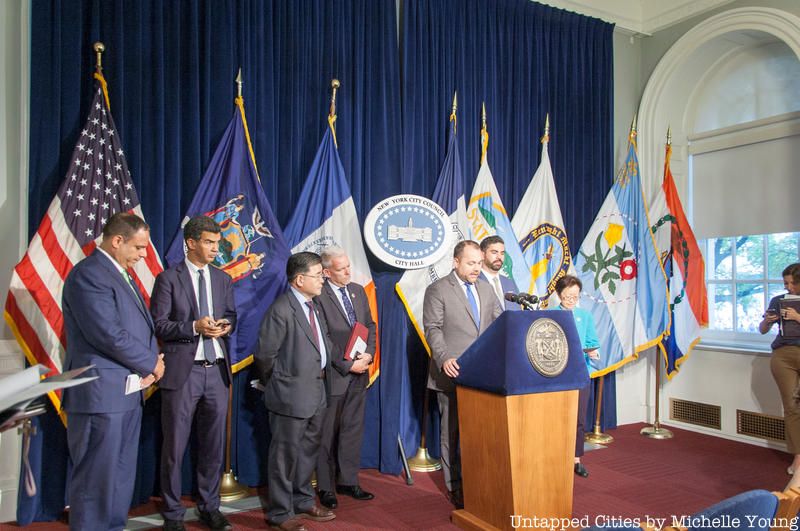Last Chance to Catch NYC's Holiday Notalgia Train
We met the voices of the NYC subway on our nostalgia ride this weekend!


Last week during Climate Week, a series of environmental bills for New York City were passed – a piece of news that went completely unreported in the hectic news cycle. The Environmental Protection Package was proposed by Council Member Costa Constantinides from District 22 in Queens that will reestablish a Jamaica Bay Task Force, require the city to create flood maps every four years in areas of the city most susceptible to flooding and sea level rise, and implement a new pilot program to study the use of excess groundwater for geothermal systems.
“Every week should be Climate Week,” said Constantinides at the press conference at City Hall before the final vote. “In our hearing,” he recounted, “we heard climate models and emission models that parts of the Rockaways will be underwater within forty years. It was a sobering hearing and a call to action on climate change.”

The Jamaica Bay Taskforce was abolished in 2013 by Mayor Bloomberg, but until then, says Constantinides, it was “working with stakeholders throughout the bay, city state and federal agencies, and experts in number of a different fields…Many of the task force are still meeting. We are making sure that this new task force…will continue the great work that they’ve done to protect the marshlands, fight pollution around JFK [Airport]…to ensure Jamaica Bay is sustainable into the future.”
The flood map bill will address areas vulnerable to increased flooding, not just in Queens, but also in Southeast Brooklyn, the Bronx and Staten Island, with the first map to be completed by 2020, a followup by April 2023, and subsequent maps every four years after. This bill will affect the half million people who live in coastal areas in New York City. Asked for more detail, Constantinides’ office told us, “The important distinction between what this law is requiring and the FEMA flood maps, is that FEMA flood maps only use historical data in its modeling, and this law would project increased flooding risk due to climate change.” The bill also requires the city to provide a mitigation plan to address flooding, making explicit that violent weather and sea level rise will only be worsening.

York College
The final bill addresses flooding on a regular basis in New York City, specifically in Queens. In the press conference, Constantinides said that in Queens, “basements are flooded regardless of whether it has rained recently, the pumps running. The problem is so severe at York College that they have to pump out 100,000 gallons of water every single day.” The bill will ask the city to study whether the excess groundwater can be used for heating and cooling in a geothermal exchange system. If the water can be found to be utilized more effectively, it is hoped that it can help these buildings “transition away from traditional fossil fuels to renewable energy sources.”
Next, check out more from the Untapped Cities Sustainability column.
Subscribe to our newsletter